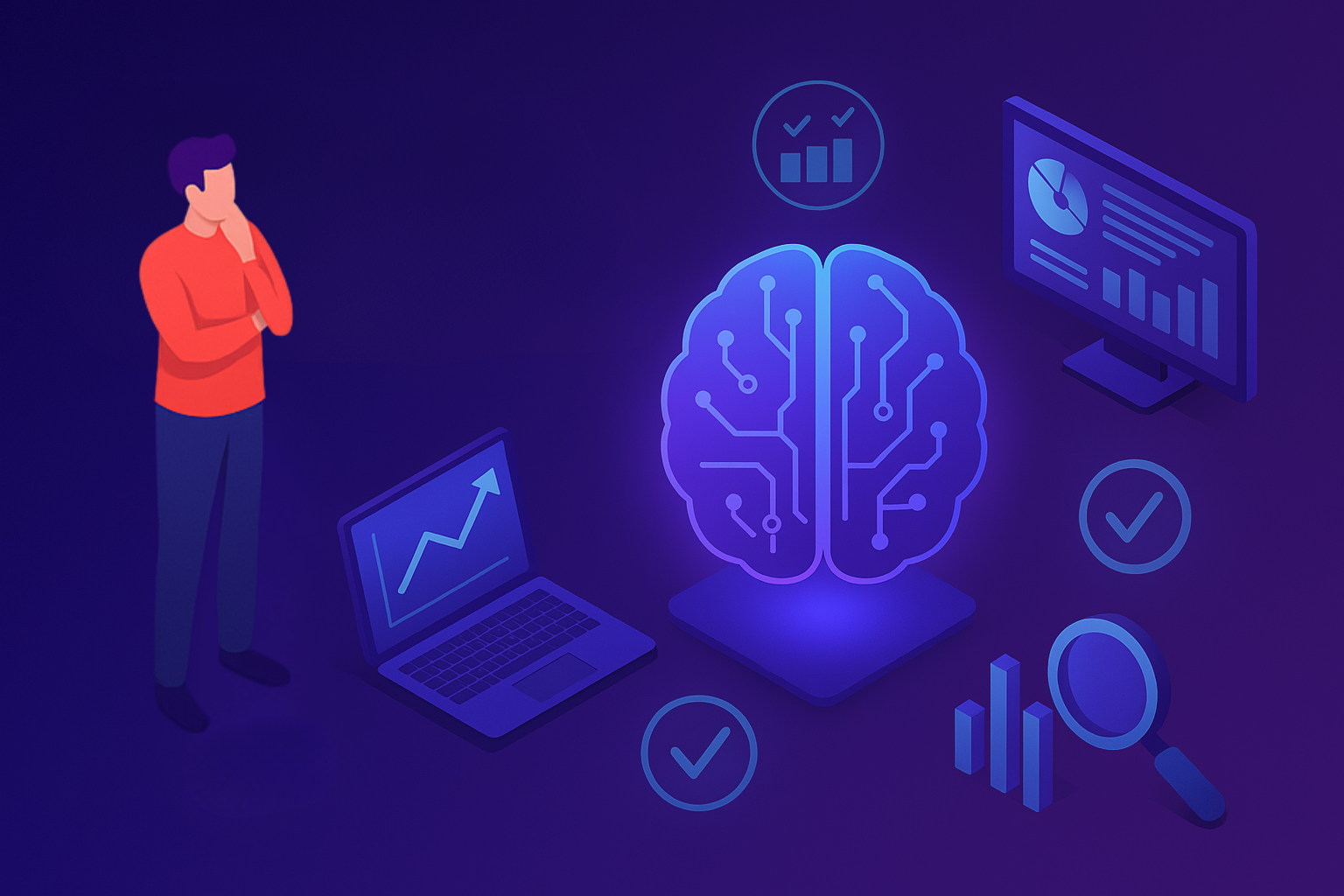How to Know If an AI Solution Is Truly Effective

Artificial Intelligence (AI) is now embedded in nearly every enterprise platform, product, and process. From predictive analytics in finance to generative assistants in daily operations, AI is often marketed as a game-changer. But in the rush to adopt these tools, one important question is often overlooked:
Is the AI actually delivering business value?
This is a concern we hear regularly from investors analysing portfolios, customers evaluating vendors, and technology leaders reviewing internal performance. Too often, AI is added because it’s trendy, not because it solves a real problem.
To evaluate whether an AI solution is actually working not just technically functional but strategically impactful, we recommend using the A.I. F.A.C.T.O.R. Framework. It is a practical way for business leaders to assess Enterprise AI solutions for business impact across key areas that matter for enterprise success.
The A.I. F.A.C.T.O.R. Framework
This framework is built on eight core evaluation criteria. Together, they help determine whether Enterprise AI solutions are improving your business or simply adding noise.
A – Alignment
Is the AI clearly tied to a business goal or customer need?
The best AI initiatives are the ones that serve a measurable purpose. Whether it’s streamlining a process, boosting productivity, or improving the customer journey, the technology should be connected directly to outcomes that matter. If the AI isn’t solving a clearly defined problem, it is just another line item in your tech stack.
I – Intelligence
Is the solution truly intelligent or just automated?
There’s a big difference between rule-based automation and machine learning. Real AI should demonstrate pattern recognition, adaptive learning, and contextual awareness. If it is just mimicking scripts or following predefined workflows, it is not AI in the sense that drives competitive advantage.
F – Fit
How well does the AI fit into existing systems and workflows?
Enterprise adoption doesn’t work if it disrupts core operations. Good AI integrates cleanly with your CRM, ERP, cloud environment, or custom apps. It should enhance how people already work, not force teams to learn something completely new.
A – Accuracy
Are the AI outputs consistently reliable and actionable?
From forecasts to recommendations, results must be precise enough to support decision-making. Inaccurate outputs drain time, damage trust, and can create downstream risks, especially in sectors like finance, healthcare, or logistics. Every AI rollout should include performance benchmarks and regular validation.
C – Cost-Benefit
Does the business value exceed the total cost of ownership?
This includes more than licensing and implementation. Think about training, cloud compute, model monitoring, data governance, and opportunity cost. If the AI doesn’t create time savings, increase revenue, or improve margins, it is not worth the investment, especially at enterprise scale.
T – Transparency
Can users and stakeholders understand how the AI works?
With growing regulatory expectations across the U.S. and globally, black-box systems are a red flag. Teams should be able to explain the logic behind recommendations, understand risks, and audit outcomes. This matters for compliance and for user trust.
O – Optimization
Is the AI improving over time through learning and feedback?
Static models are a missed opportunity. An effective AI application should adjust to new data, user inputs, and business trends. Optimization is the foundation of long-term value, especially in fast-changing environments.
R – Responsiveness
Can the AI adjust to new situations, edge cases, or changing conditions?
The business world doesn’t sit still. Whether it’s a change in customer behavior, a supply chain issue, or a new compliance rule, your AI tools need to keep up. Responsiveness helps teams avoid service delays, inaccurate insights, or manual firefighting.
Why This Matters for Business Leaders
Enterprises are investing heavily in AI, often without a clear structure to measure ROI. That is risky. You need to know not just whether your AI is functioning, but whether it is moving your business forward.
The A.I. F.A.C.T.O.R. Framework helps:
- Audit internal projects or pilot programs
- Vet AI vendors during RFP processes
- Align product and IT teams with leadership goals
- Improve how you report AI progress to the board
It is a tool for strategic alignment not just technical review and is especially useful when evaluating Enterprise AI solutions for business impact.
How to Apply This in Your Organization
If you’re currently using AI, use this framework to assess performance. If you’re planning to roll out a new solution, use it as a pre-check before committing.
Ask your team:
- Where is our AI aligned with business objectives?
- Are we tracking model accuracy and financial impact?
- How well does it integrate with our current tools?
- What is the plan for model optimization and oversight?
Even if you’re only in the planning phase, having this framework in place will make future deployments smoother, faster, and more effective.
Final Thought: AI That Works Means AI That Delivers
AI doesn’t need to be perfect, but it must be productive. Business leaders need more than impressive demos. They need measurable outcomes.
The A.I. F.A.C.T.O.R. Framework keeps teams focused on what matters real intelligence, real value, and real results. This is especially true when choosing Enterprise AI solutions for business impact that Ignitho delivers with a focus on outcomes, not just algorithms.
